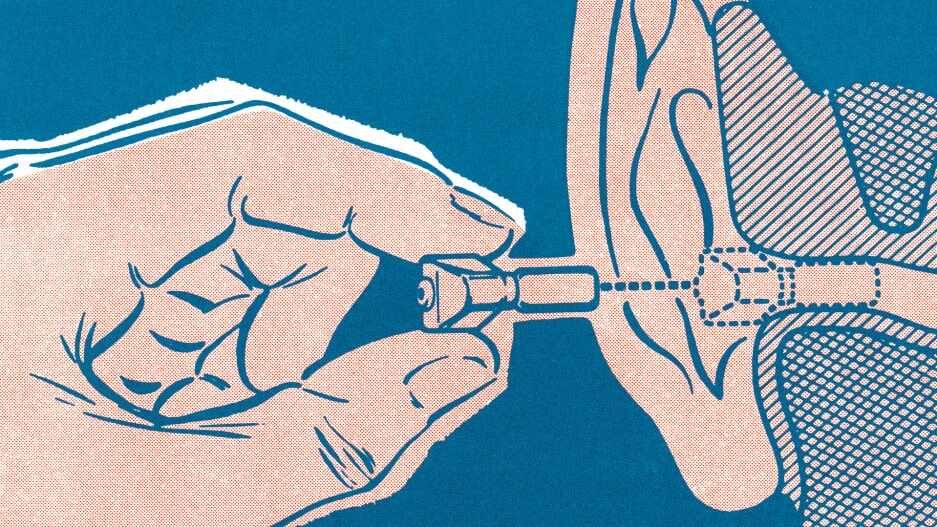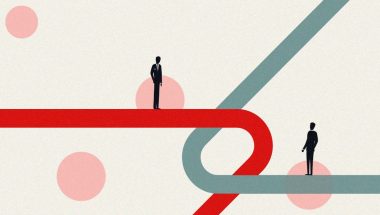- | 1:00 pm
Why over-the-counter hearing aids could be the next tech bonanza
After the FDA ruling, prices for hearing aids are expected to drop as more tech startups begin making hearing devices.

By mid-October, the hearing aid industry will be fully in the throes of a revolution—one that’s been a long time coming. And it could open up a new, lucrative area for tech companies and be a real boon to consumers, too.
On Tuesday, the Food and Drug Administration (FDA) announced it would let some hearing aids be sold over-the-counter for the first time, a move that will make the assistance devices much more widely available and, in all likelihood, significantly cheaper.
It’s a move that has been increasingly important, as hearing loss is expected to rise dramatically in the coming decades. The World Health Organization (WHO) warns that by 2030, nearly 630 million people worldwide will have a hearing disability. By 2050, that could jump to 900 million, in part because of regular exposure to loud sounds at work and in people’s personal lives (such as listening to music in earphones).
Currently, 15% of American adults (37.5 million) age 18 and over report some trouble hearing.
The legislation comes with some limitations. Devices for severe hearing loss and those intended for use on children under the age of 18 will still require a prescription. But for the millions who suffer from mild- to moderate hearing loss, picking up a hearing aid could be about as easy as picking up a pair of reading glasses at the drugstore.
They won’t be quite that cheap, of course, but they will likely be ess than today’s hearing aids, which can cost as much as $5,000—and often aren’t covered by insurance. The FDA estimated the price of those devices could be cut in half once the rule takes effect.
“I’m confident that we will see a significant reduction in prices for consumers with mild to moderate hearing loss,” said Blake Cadwell, founder and CEO of Soundly, a site that allows people to compare and buy hearing aids online. “Expect simple products like the Bose B1 hearing aid to go on sale for $899 and more expensive devices to sell for $1,500. In the long term, we may see even lower prices as consumers become comfortable with more self-service. For now, OTC players will have to invest heavily in education and customer service, which will keep prices above other consumer electronics.”
It’s estimated that the hearing aid market will grow to $19.5 billion by 2030. And among the winners could be startups and other companies that have been working on “augmented hearing devices” over the past few years. Nuheara, for example, offers the IQbuds, which claim to automatically calibrate to your hearing profile. Those currently sell for $499. And ZVOX’s VoiceBuds, an FDA-registered Class One hearing aid, currently sell for less than $300.
Don’t expect big players in the consumer tech space to sit on the sidelines, either.
“Established companies like Phonak and ReSound have been preparing for these guidelines and will almost certainly launch their own products in the next year or two,” said Cadwell. “In the short term I expect brands like Lexie, which distributes a Bose hearing aid, and Eargo, who makes an innovative invisible design, will benefit. Expect tech leaders like Apple and Jabra to eye this space in the coming months and years.”
Hearing aids have been a hot MedTech item at CES for years. In 2021, Oticon More won an Innovation Award for being the world’s first hearing aid that includes Deep Neural Network technology, which it says can deliver a more refined sound that supports how the brain works naturally. In 2022, Bose won an Innovation Award for its SoundControl Hearing Aids. Signia also was an honoree for its Bluetooth-capable, in-the-ear hearing aid, the Insio Charge & Go AX.
Venture capitalists have been waiting for the FDA to make this ruling as well. In 2020, Whisper emerged from stealth with a $35 million Series B investment round, headed by Quiet Capital, bringing its total funding to $53 million. The company’s product uses artificial intelligence to adjust to different situations, such as a crowded bar or a dinner with friends.
Last year, hearing company Olive Union landed $7 million in its own Series B round. And Eargo, in 2020, announced a $71 million Series E financing round after debuting its hearing aid, which is largely invisible as it sits in the ear canal.
The FDA decision comes after a multiyear push by lawmakers and hearing-assistance companies to broaden the category. As with corrective eyewear, over-the-counter hearing aids will not do away with the existing audiology industry, but it should broaden availability and, ideally, begin erasing the stigma many people feel when it comes to hearing problems.
“Hearing loss is a critical public health issue that affects the ability of millions of Americans to effectively communicate in their daily social interactions,” said FDA Commissioner Robert M. Califf, MD in a statement. “Establishing this new regulatory category will allow people with perceived mild to moderate hearing loss to have convenient access to an array of safe, effective, and affordable hearing aids from their neighborhood store or online.”








































